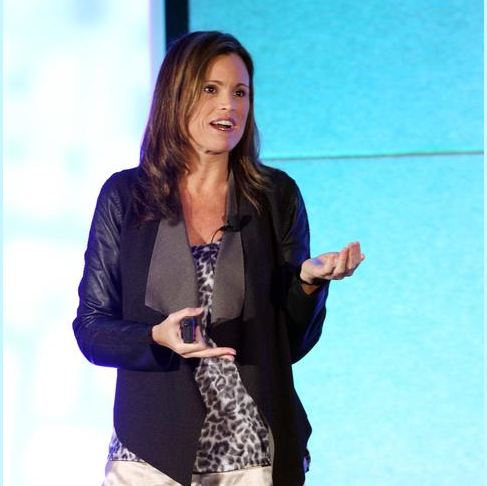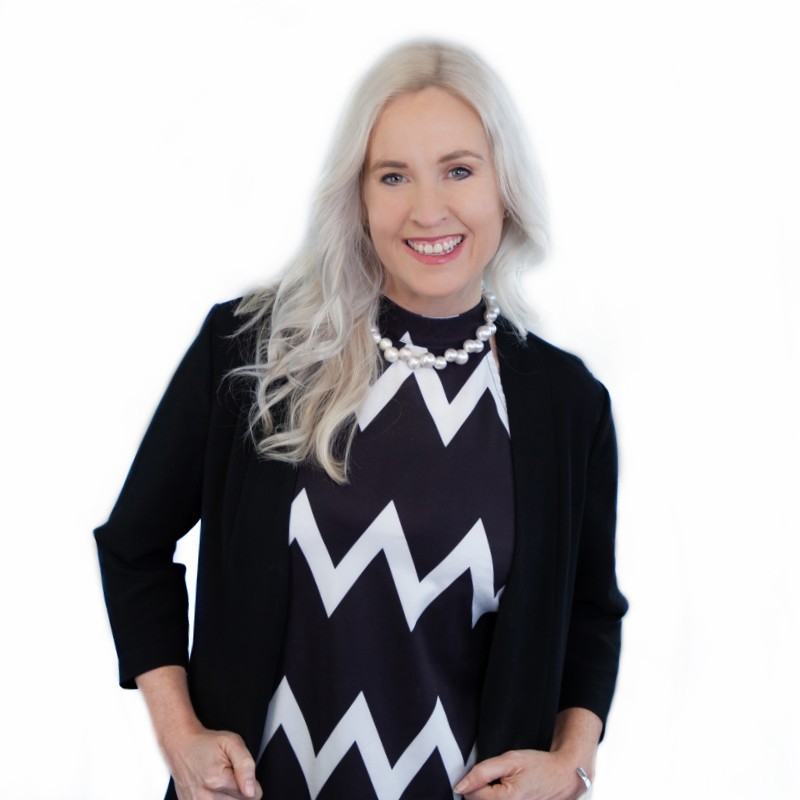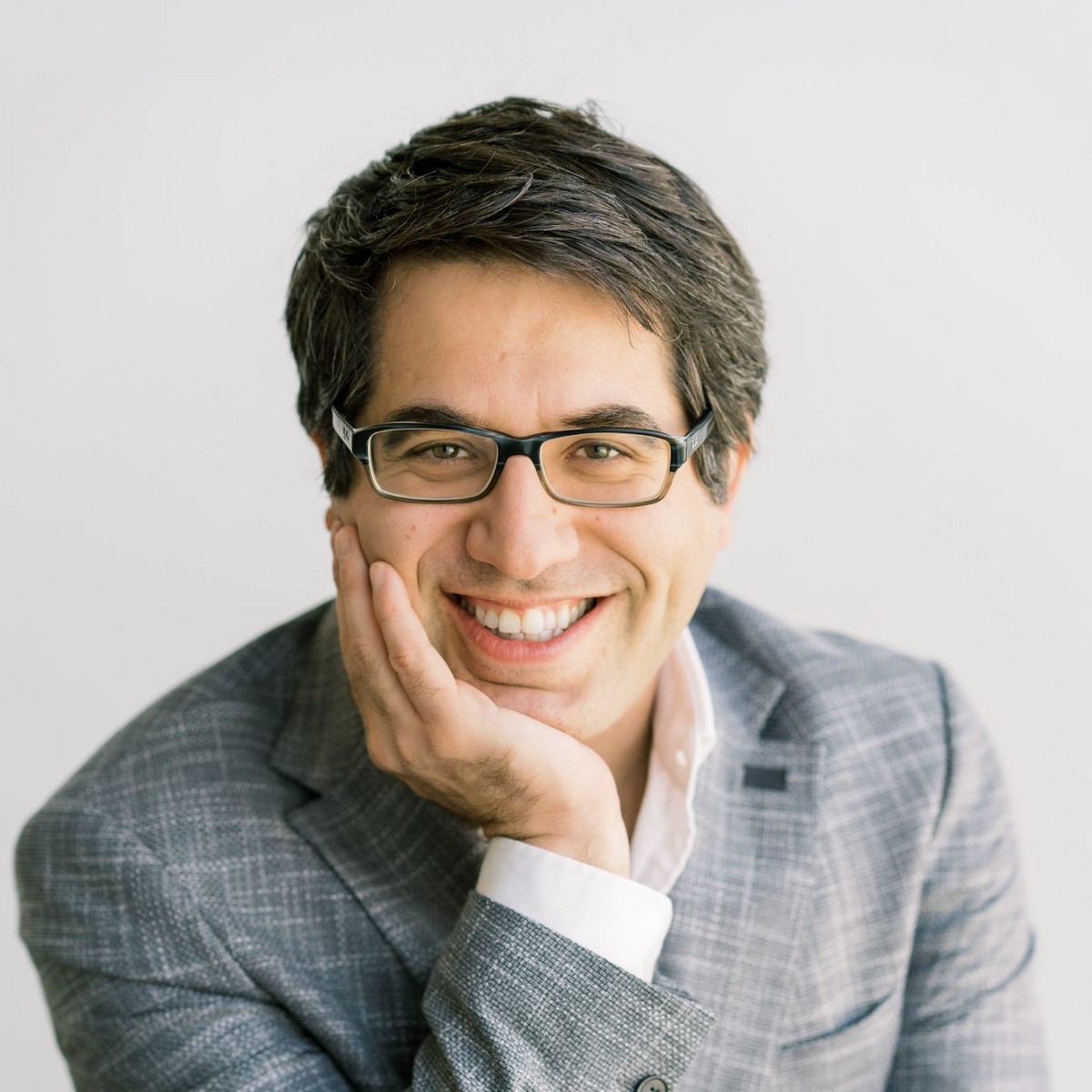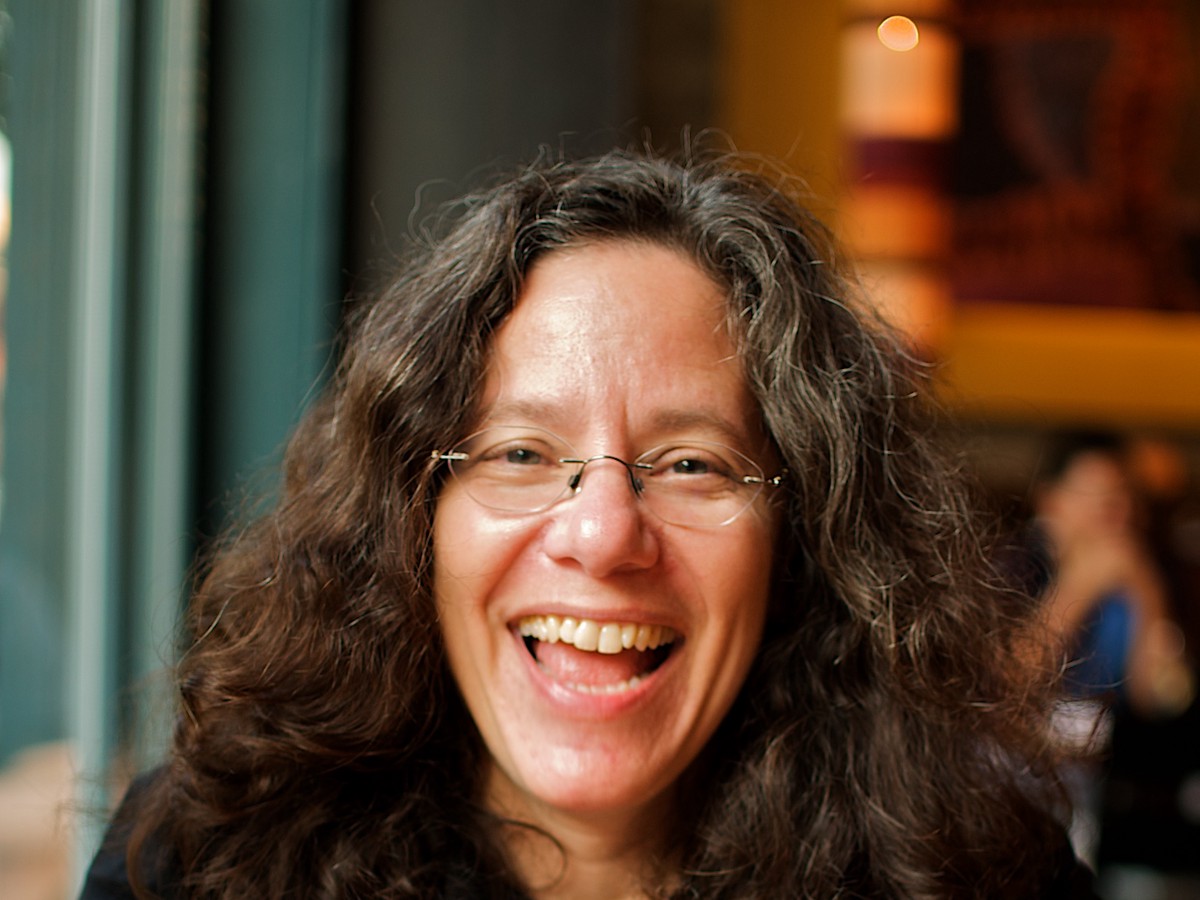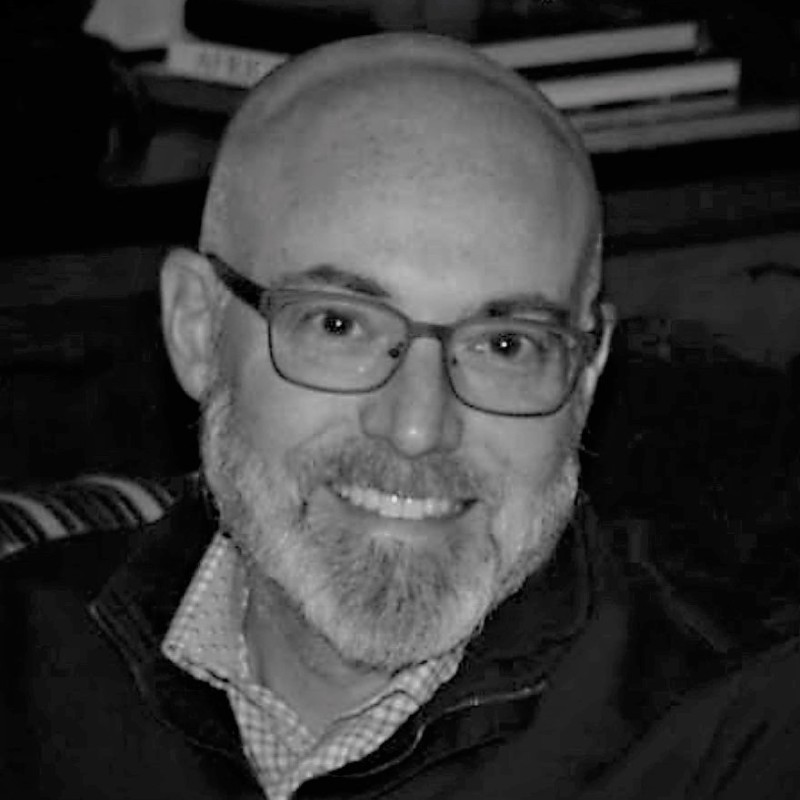Stress is what happens when demand exceeds capacity. So says Dr. Heidi Hanna, Chief Energy Officer of Synergy Brain Fitness.
And we experience it at work all the time.
Stress was always a part of the work life, but in pre-digital times, it was contained to a place, or a time. Now, stress at work can attack us anywhere and anytime.
Heidi says, “Just because we have more capacity to be connected, we have an endless amount of new information.”
This hijacks us into a chronic state of stress.
Oscillation
Heidi says it’s not just the stress that’s the problem. Stress is a normal and healthy part of life. The danger is that we don’t recover from it.
Nearly every function in the human body oscillates: heartbeats, brainwaves, blood sugar, etc. Yet, we’ve entered an era where stress is always up and we don’t get a chance to come down and relax. A pandemic also doesn’t help anything when you can’t take the evenings and weekends to recover.
Reducing the stress of your team
Heidi says the first step in reducing the stress of the people on your team is to know that stress is contagious. Your team won’t be able to recover from stress if you never do.
After that, find ways to work with individuals. Everyone has their own unique pattern and managers should try to allow for people to work at times that fit their natural energy rhythms.
Links
Welcome back to The Digital Workplace podcast. Today our guest is Dr. Heidi Hanna. She is the Chief Energy Officer of Synergy Brain Fitness and the author of “The Sharp Solution” and “Stressaholic“. Heidi, good to talk to you. I’m feeling stressed already making sure I got your introduction downright.
Yeah, nice to talk to you.
Yeah, I’m really looking forward to this conversation. Stress is a huge topic that I want to get into, something that’s key to having a great digital workplace. But first, let’s do a CAPTCHA question. Prove your humanity here. I want to know what is your morning routine.
So I actually have a pretty consistent morning routine. That’s not always been the case. I was not a morning person growing up. But it turns out I love mornings. I know this is going to sound a little crazy, but I actually love getting up at about 4:30 in the morning. I like to watch the sun come up. I like to do some writing, some meditation. So when it happens and I wake up early, I have a routine of actually listening to a guided meditation. And I do something most people probably haven’t heard of before called cranial electrotherapy stimulation.
Correct, I have not heard of that.
Which ultimately just helps nudge the brain into a gamma waves state. So it’s like meditating without working so hard. So I meditate and I I’m very into sensory experiences. So that’s why I like the electrical stimulation. But I also love using aroma therapy and sound therapy and all that kind of stuff. And I give myself a solid hour just to be in that space to rest and prime my brain for positive before the day starts.
That’s good, but it sounds sounds oddly, I’m going to say, mechanical. I’m not quite convinced you’re a human yet. 4:30 in the morning, are you sure?
Yeah, well, and here’s the thing that probably makes it human is I was waking up at 4:30 in the morning before COVID hit. And I felt bad about it. I felt like there was something wrong with me and I got into a panic about this. Oh, my God, I’m waking up so early. But I like going to bed at 8:30 or 9. So when I really calculated that I realized I was getting adequate sleep. For me, that morning time, and especially since I live by the ocean, and I can like watch the waves crash and listen to sound of the ocean is so spiritually really fulfilling to me to have that quiet time. And I need a lot of quiet time. And once the world wakes up, I don’t get as much.
Okay, well, you passed. We’ll call it good. Let’s start off. Stress, everybody knows about it. But you know a lot about it. Let me just start off with the easy one here. Distinguish between good stress and bad stress for us.
That sounds like it’s an easy one. But it’s not that easy. Because we have to take a step backwards and define what stress is before we say what’s good and what’s bad. So let’s go a step back and say that the working definition that I use, that I’ve been really happy with, is that stress is what happens when demand exceeds capacity. So we can unpack that a lot and talk about specifically what’s happening physiologically or psychologically. But I like to just start with that. So anytime there’s more demand than we have capacity to meet, it could be physical, emotional, mental, spiritual, social, financial, there is a stress reaction pattern that’s going to happen to help us bridge the gap between demand and capacity.
The reason that’s so important is because, then if we look at what’s good or bad, we have to know the outcome. We’ve had something happen that was seemingly bad, but had a good outcome, maybe something that seemed to be good that had a bad outcome. And one of the examples we look out a lot in the research is people who win the lottery. And how many people say like, if I had more money, if I could just win the lottery, my life would be perfect. But statistically, people are actually less happy after they win the lottery. Because their assumption was they would be happy. And it turns out, they’re the same person. And they have a whole new set of challenges. So I think the stress itself is not good or bad, but it is energy potential that can be used in positive or negative ways. And I think that’s important to shift how we think about stress.
Yeah, I like that a lot. And just thinking about it as that overwhelming of a system because you can put stress on a machine, too, right? If you’re trying to push it beyond what it’s capable of doing. That makes a lot of sense.
What we talk about now, most of my work is focused on, had been focused on resilience, but resilience is really just bouncing back to where we were. What I’m trying to do with my new work and the new model that I have in my research is really about positive adaptability. So how do we take what we’re going through, the stressors, the strains, the challenge, the change, whatever it is, and use it to fuel positive progress, knowing that’s not always going to happen. But I think we think about COVID or any significant change we’re dealing with, we’re not going back to where we were before, and if we do, we really missed the opportunity that we have to get better.
How would you compare stress and anxiety?
So stress is, again, what happens, let’s say it’s undefined, this pattern of reactions that happen when demand exceeds capacity. And anxiety may be a result of that. Anxiety tends to be more of a clinical or pathological condition where the stress reaction can’t get turned off. So we could get diagnosed with anxiety when stress reactions continue for a long period of time or they happen when there’s really no stressor there. For me, I’ve struggled with anxiety since I was about 10 years old, and I actually faint if I get too stimulated or too anxious. So to me anxiety is that physical sensation I get when my system is stuck in a fight or flight response, or what we often call a freeze or faint response. So they’re two different sides of the anxiety spectrum. One is elevated, activated high intense energy, and the other one is actually like a whole system wide shutdown.
Let’s take it into the work context and leave COVID aside for a while. Stress in the workplace, let’s say 1970s, 1960s, 1980s, sometime around there, what were the major causes of stress? How do people deal with stress in the workplace, thinking about in office settings?
I think most of the stress of the workplace was having demands on us, having expectations on us, but it was really contained within a period of time. So up until a certain point, we worked when we had light, when there was agriculture, I mean, we could go back that far and say the stressors were mostly physical or weather situations or things totally out of our control. But there was more of a container around the type of stress we have. So looking back, a lot of stress is financial insecurity, or health situations, or family situations, relationships, things like that. But even within that there was a container. I think what’s happening now that’s really causing a lot of concern, certainly with regards to the impact of stress on mental health and workplace performance, is there’s no longer really a container.
The containers got smashed. They’re gone.
Oh, it’s so smashed, and that no one really knows how to set boundaries or expectations. We don’t really talk about it because we’re so busy. So just because we have now more capacity to be connected, we have an endless amount of new information. Literally, there’s never enough time to get it all done, because it’s never done. So we’re now hijacked in the state of chronic stress. And it’s actually not so much the stress. It’s the inability to recover and recharge and take downtime. So it’s going from something that had some oscillation pattern, some day and night, some on and off, to now just flatlining and just going all the time, and our bodies can’t manage that way. I mean, everything about the human system is designed to oscillate, heartbeats, brainwaves, blood sugar, blood pressure. It’s not supposed to be a flatline.
Hmm, interesting. You got me thinking a lot about how, especially this container idea because it’s place, the container of place has been smashed now that we’re working from home, so you can’t restrict that. You have the container of time has been smashed, because now people are like, well, I’m using the same devices for work and for pleasure later on in the day, especially during a pandemic when you’re stuck in one place. It’s like, man, I don’t have anything else. And I’m really resonating with this idea of oscillation and being able to have the recovery time and being able to have that high stress time. So walk us through what that means in a digital world to try to find that kind of oscillation when it’s hard to build that back in.
I think the first thing we have to realize is that it doesn’t necessarily feel good to disconnect. So the whole reason I wrote the book “Stressaholic” was I was traveling around and speaking on all of these types of situations and topics, including stress. And I would often build vacation into the day after the conference. I’ll just stay an extra day and go get a massage or something and call that vacation. I was sitting in a hot tub at a spa, and I just really wanted to work. And I remember thinking like, it’s really uncomfortable to be still and relax. I don’t like it. So our tendency is it’s almost like going through a sugar detox. We crave the stimulation. And actually, the more tired we get, the more we crave the stimulation.
So now, it’s like we’re just sitting at a stoplight and there’s a second to be quiet and we reach for a device. We have to listen to a podcast. We just have to have something going all the time. So I think the first thing to understand is that we need to and need to, like this isn’t an optional thing, we have to have a pulse or a rhythm or a beat, we have to train ourselves to be more comfortable being still and being quiet and sitting through what makes it uncomfortable. There’s other things we can do. We could be motion physically, that’s a good way to quiet the mind by being physically in motion or listening to music or something like that, doing something creative.
But I think if we look at patterns in oscillation, the research maybe 34 years ago suggested that we have these ultradian rhythms during the day of about 90 minutes of peak performance, and then we needed to take a break. But that’s within not a lot of stress. So the greater the stress, the more recharge and recovery we need. So if we’re going at this pace, something that looks more like a 50-minute on with a 10 to 15-minute off, or you may have heard of the Pomodoro effect of oscillating. It’s really helpful. I think the challenge is it just doesn’t feel good. And we’re so stuck on being constantly productive and living like we’re dying at every moment and doing the hustle all the time. We’re trying to hack our own biology instead of learning how to actually follow it in a way that allows us to be healthier and happier and perform at higher levels.
We’ve talked about this idea of discomfort before when it comes to productivity and how we need to understand, one, what are those distractions that are coming in because we seek out the distractions a lot of times. They’re own internal ones, we embrace them, because we have that discomfort. We’re not okay with really shutting down and coming off of what we were before. I think that that’s a great point that we really need to learn more about as humans, as humans work in this new world. I’d like to get your opinion. If we just came up with the idea, like we had not been working for millennia and now we decide, okay, let’s start working, based on everything we know about our own psychology, our own physiology, what do you feel like, I mean, obviously, it’s going to be different for everyone, we’re going to need to individualize things. But if you could just give a guideline in terms of before it was, okay, work 9 to 5, Monday through Friday. But if we can reinvent that, think of it fresh, what do you think would be more of an ideal setup for most people to work?
So funny, I’m smiling a little bit because on the flight I was just on a couple days ago, I watched for the first time the movie 9 to 5. It’s a classic comedy movie with an amazing trio of female comedians and actresses. I remember towards the end, they’re having this great success because the women are in charge. They’ve decided that people bring plants into the office and pictures of their family and flexible work. And they have work share and some people would work from 9 to 5, some would work from 8 to whatever. And I just remember thinking like, this isn’t that revolutionary. They were talking way back then. But yet, here we go. There are other people waking up at 4:30 in the morning, who are not meditating, or reading, or writing, they’re turning on their phone, they’re looking at the news, they’re trying to figure out what’s going on. We’re constantly thinking about our to do list.
So I think, first of all, I would individualize it. And I would actually talk to, if I was going to create a team or an organization, I would use a series of assessments to figure out people’s unique energetic patterns and when they feel like they do their best work, what time of day is that. Some people would rather work less hours and work every single day. Some people would rather work 10 hours three times a week, spread out or all together. But I would start seeing if there’s a way to customize as much as possible to each individual’s pattern. And then how does that impact the jobs that we’re doing?
We would probably find, in fact, this might be an interesting dissertation for me, that certain people with certain skill sets and certain job types have certain patterns. I know all of my colleagues who are super creative tend to be more night owls. People who tend to write more, do curriculum development kind of stuff, we tend to be the morning people who want to get up before anybody else. It would be interesting to look at that. But regardless of what the patterns are, we need to think about how we primed the brain to be in a positive state. There are some very specific things with that. How do we move more often? How do we make sure we have natural light and fresh air? How do we start meetings with something like gratitude or healthy humor or curiosity gets the brain into that ideal state. I think it’s really setting it up for how we optimize human capital and how we maximize the energy we bring to the time that we have, not just how much time we can put in or how much content we could get across but the whole energetic experience because it’s really, at least in our workplace still to this day until AI takes completely over, it’s still about people and how people function.
I love this conversation. I’m just working on an article now about the fact of how little we know about humans, and about how little we know about how we work and we’re just learning things. I’m so glad people like you are doing that research and trying to find out those things. Because it does make sense if you’re in a work environment to run someone through an assessment and figure out, oh, did they tend to work best during these times, and for these spurts of times, and so on I’m going to optimize their schedules so that’s what they’re able to do. That just makes sense that we would go down that way, instead of just saying, hey, you got to be here from these hours to these hours and work at this time.
Let me say a few issues of why it hasn’t happened. Number one is it’s just the status quo. It’s worked so far so let’s keep doing it. If it isn’t broke, don’t fix it. But it’s broke. It’s definitely broke. We have massive amounts of mental health challenges within the workplace. Having said that, I strongly believe the workplace offers all the solutions inherently for what a workplace is. It has mission and purpose. It has social support. It has goal setting. It has the option to help with movement and healthy environments. Everything’s there, and the company wins when the individual is healthier. But it always seems to come back to the same thing, which is time. People won’t take the time to do the assessment or debrief the assessment or have a conversation about what works best for the individual. We just throw them into the mix and get them going because they’re already 10 steps behind. I think the whole onboarding of people in the workplace, and also more mentorship and more opportunity for personal development within the workplaces, would really pay off huge in productivity.
Yeah, I love it. Let’s talk about leaders in the digital workplace who are leading teams, if you’re a team leader, you never want to be the cause of stress in someone’s life. But oftentimes, you are, maybe unintentionally, or you don’t realize how much stress you’re putting into someone else’s life. So what are some tips you can give to people to do a check on themselves and make sure that they’re not adding extra stress onto people’s lives?
Yeah, I think there are two things that come to mind there. The first one is understanding that stress is incredibly contagious. So just like a parent child situation, a lot of parents will say, my child’s really stressed out. What should I do? The best thing you could do is try to get yourself to a place of calm energy. It doesn’t mean that you’re relaxed and doing nothing. What I’m saying is you can be confidently in situations that are challenging, but have that confident energy, speak at a slower pace, make good eye contact, make time for people. I think what often doesn’t happen is that people assume their employees don’t want to be micromanaged so I’m just going to let them do what they do and assume everything’s fine unless they come to me. And meanwhile, I’m like a hamster on the treadmill and running, running. I think that comes across.
I think others are then going, well, in order for me to be moving up into a more senior position, then I have to be up all the time, and I have to be miserable, and I have to be stressed. And so there’s just this cultural norm of the busier and the more stressed you are, the more important you are. So that’s what we should all aspire to. And I think that that’s wrong. And I think therefore, leaders really need to role model that you can take time for yourself, you can take good care of yourself, you can exercise or take time off or do those things, and have the trust in your organization that the leadership is there to sustain that so that people can see it is realistic to have some work/life integration. I think that’s the first thing is really role modeling.
The second one, and I’m honestly shocked, I just think this is getting worse and worse and worse, is how we communicate. It was one of the things that one of my colleagues, Chris, who works with me at the Digital Wellness Institute, has just done such an amazing job explaining this to me. I’ve never heard of this concept of a communication charter and really taking your team through the experience of how each person best communicates and then as a group how we’re going to communicate. Because we’re getting platforms all the time, like is it Slack, is it Google Documents, is it Dropbox, is it this, is it that. And it’s all over the place, and sometimes multiple places that we have to keep in mind. I know I’m in a situation right now where we’re really struggling because our primary leader is not an effective communicator. And so the rest of us are constantly scrambling trying to figure out what’s going on when really a 5-minute conversation could have helped to alleviate that.
So I think, again, it’s taking the time to say, before we rush into this next project, how do we want to communicate about this? What would be best and where our boundaries like let’s agree not to text each other about this and only communicate on this platform or let’s agree not to email after 6 o’clock p.m. or let’s agree we’re all going to take Saturday or Sunday off. But if we’re all on the same page, then we’re not constantly feeling like we’re missing something or we’re a bad teammate if we’re not reacting within 30 seconds to everything that pops up. It’s just literally not humanly possible.
Yeah, absolutely. We are also big advocates of communication charters, ground rules, working agreements, lots of different terminology for it. But just something that says, hey, here’s the baseline, because without that, the assumption is everything’s going to happen and you’re going to be available all the time. And it’s just not sustainable.
I’m checking it, and I don’t even know what I’m not checking, but I’m checking. I think that’s a big part of what’s going on is there’s this underlying anxiety that we’re missing something. And it’s not like fear of missing out, like what are my friends doing that’s fun. What am I missing? What appointment am I missing? Or what timezone did I get wrong? Or what platform is someone trying to reach me on? It’s constant. And so no wonder we have a hard time falling asleep at night, our brain still thinks that we’re not allowed to sleep because we’re not done yet. There’s really no point where our brain says, I can rest now, like really ever.
And by the time we get to retirement, when we do finally rest, we’re so exhausted, it’s probably shocking to some people still that one of the highest spikes in human mortality is within six months of retirement, because we go from being on at such an intensity to being off and now we’re like, oh, now what do I do? We have to figure out a way, it’s almost like how do you take a little vacation every day? How do you take a little vacation every hour? How do you build that in more so that you’re constantly nudging your brain to recognize that you’re safe, that you have enough, that you are enough, and you can really show up in the present moment. And sometimes we have to take a timeout in order to get realigned and make sure that we’re doing that effectively, especially when working with other people.
Yeah, I was part of a meditation to ask the question, what’s left when there’s no problem left to solve? What do you do then? Because that’s mostly what we’re doing all the time is trying to find, solve a problem or find a problem to solve, and when they’re all done, it’s like, man, well, just be. And it’s tough to do that. It’s tough to step into that place.
Super tough, yeah. But I love the idea of it. And I think, again, that’s where spending time in nature and getting into creative endeavors can be really helpful for that, because I don’t think we ever have to be skilled, but we can be curious about things outside the scope of fixing problems.
Definitely. Heidi, this has been great. I’m very energized by this conversation and learning about this. Tell us more about what you’re doing right now, what you’re getting involved in. You mentioned Digital Wellness Institute. So tell us more about that.
Yeah, I’m super excited to be involved. The Digital Wellness Institute is still a fairly new program, but they have a certification program for people that want to get trained. It’s a wonderful modality. They’ve got a digital flourishing wheel that’s based on a lot of the positive psychology component. So people can find out about that. Digital Wellness Day is actually coming up this week on May 7. And then for me, I actually do mostly corporate speaking engagements. But my favorite thing is to work with organizations and actually help them teach employees how to master stress and use it to fuel positive change.
At the same time, I teach a couple courses at Harvard Extension. So I really love connecting with my students. And believe it or not, I’m in a second PhD program on global leadership and change where I’m working on and writing about adaptability. So it’s fun. I feel like I live in this living laboratory of working with organizations. I do really believe companies hold all the keys to improving our relationship with stress, improving mental health. But that relationship with technology and how we communicate with each other, and how we set healthy boundaries, especially from a neuroscience perspective, is going to be absolutely critical to making sure that we can actually sustain the good work that we’re doing. So I appreciate the conversation.
Yeah, and it’s good for us to check in with you and your world every once in a while just to hear what you’re learning, what you’re figuring out. And I think that it’s going to be essential for people who are leading digital teams to every once in a while just hear, what’s the latest research, what do you guys working on, what are we finding out so they can apply those things, do their own experiments with their own teams and figure out how to make the workplace a better place for humans.
Absolutely. I will tell you, it surprised me, but I have now surveyed about 80,000 people and the number one stressor that people have is the feeling that there’s not enough time to get it all done. And that really does come back to this over connected disconnected workplace. But the good news is we can use a lot of the same tools to help us improve that relationship and our productivity.
True. Heidi, thanks so much for being on the show. We look forward to talking with you again soon.
Thank you. I look forward to it.
As an experienced speaker, Dr. Heidi Hanna has been featured at many national and global conferences, including the Fortune Magazine Most Powerful Women in Business Summit, ESPN Women’s Leadership Summit, and the Million Dollar Round Table.
Dr. Hanna is also the Chief Energy Officer of Synergy Brain Fitness, a company providing brain-based health and performance programs to individuals and organizations, a Founding Partner of the Academy for Brain Health and Performance and a Fellow and Advisory Board Member for the American Institute of Stress. She is a NY Times bestselling author of several books, including The Sharp Solution, Stressaholic, and Recharge.
